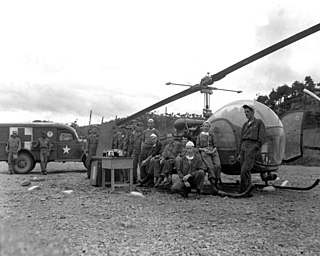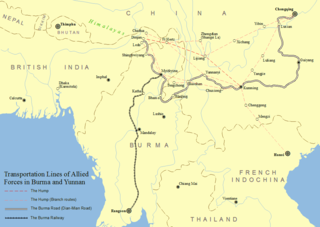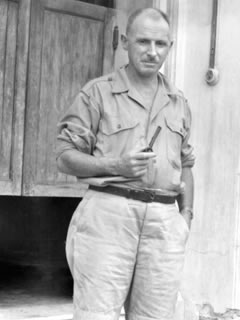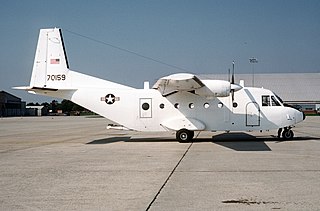
Joseph Warren "Vinegar Joe" Stilwell was a United States Army general who served in the China Burma India Theater during World War II. An early American popular hero of the war for leading a column walking out of Burma pursued by victorious Japanese forces, his implacable demands for units debilitated by disease to be sent into heavy combat resulted in Merrill's Marauders becoming disenchanted with him. Infuriated by the 1944 fall of Changsha to a Japanese offensive, Stilwell threatened Chinese Nationalist leader Chiang Kai-shek that lend-lease aid to China would be cut off which led Ambassador Patrick J. Hurley to decide Stilwell had to be replaced. Chiang had been intent on keeping lend-lease supplies to fight the communists, but Stilwell had been obeying his instructions to get Chinese communists and nationalists to co-operate against Japan.

Mobile Army Surgical Hospitals were conceptualized in 1946 as revolutionized units of ASG Units which were “Auxiliary Surgical Hospitals” made during World War II became obsolete. MASH units had 60 beds, surgical, nursing, other enlisted and officer staff available at all times. Often working long hours to save lives in many wars, MASH Units were in operation from the Korean War all the way to the Gulf War and the remnants slowly disappeared in the early 2000s. MASH units filled a very vital role in military medicine, that was providing close support to army units upwards of 10,000 to 20,000 soldiers. There is also a low mortality rate as a whole coming from these units as the transportation time to hospitals was low resulting in fewer patients dying within the “Golden Hour”. The “Golden Hour” is the first hour after an injury to a person which is referred to in drama as the most important hour. This is because mobility and mortality have the highest chances of being kept for a patient, that is one of the reasons why MASH units were located so close to the front lines. The term was made famous in the novel, movie, and television series M*A*S*H, which depicted a fictional MASH unit. The U.S. Army deactivated the last MASH unit on February 16, 2006. The successor to the Mobile Army Surgical Hospital is the Combat Support Hospital.
The 11th Army Group was the main British Army force in Southeast Asia during the Second World War. Although a nominally British formation, it also included large numbers of troops and formations from the British Indian Army and from British African colonies, and also Nationalist Chinese and United States units.

The Burma Road was a road linking Burma with southwest China. Its terminals were Kunming, Yunnan, and Lashio, Burma. It was built while Burma was a British colony to convey supplies to China during the Second Sino-Japanese War. Preventing the flow of supplies on the road helped motivate the occupation of Burma by the Empire of Japan in 1942. Use of the road was restored to the Allies in 1945 after the completion of the Ledo Road. Some parts of the old road are still visible today.

China Burma India Theater (CBI) was the United States military designation during World War II for the China and Southeast Asian or India–Burma (IBT) theaters. Operational command of Allied forces in the CBI was officially the responsibility of the Supreme Commanders for South East Asia or China. However, US forces in practice were usually overseen by General Joseph Stilwell, the Deputy Allied Commander in China; the term "CBI" was significant in logistical, material and personnel matters; it was and is commonly used within the US for these theaters.

The Ledo Road was an overland connection between India and China, built during World War II to enable the Western Allies to deliver supplies to China and aid the war effort against Japan. After the Japanese cut off the Burma Road in 1942 an alternative was required, hence the construction of the Ledo Road. It was renamed the Stilwell Road, after General Joseph Stilwell of the U.S. Army, in early 1945 at the suggestion of Chiang Kai-shek. It passes through the Burmese towns of Shingbwiyang, Myitkyina and Bhamo in Kachin state. Of the 1,726 kilometres (1,072 mi) long road, 1,033 kilometres (642 mi) are in Burma and 632 kilometres (393 mi) in China with the remainder in India. The road had the Ledo-Pangsau Pass-Tanai (Danai)-Myitkyina--Bhamo-Mansi-Namhkam-Kunming route.

Sir Albert Ernest Coates OBE, FRCS (1895–1977) was an Australian surgeon and soldier. He served as a medical orderly in World War I serving on Gallipoli, and as a senior surgeon for the Australian Army Medical Corps in World War II in Malaya. He was captured by the Japanese and during his time as a POW, worked as a surgeon for the many Allied POWs working to build the Burma-Thailand Railway.

The Chinese Expeditionary Force was an expeditionary unit of the Republic of China's National Revolutionary Army that was dispatched to Burma and India in support of the Allied efforts against the Imperial Japanese Army during the Japanese invasion and occupation of Burma in the South-East Asian theatre of the Second World War.
During World War II, Portable Surgical Hospitals (PSH) were a type of field hospital within the United States Army. They were units of the United States Army Medical Department designed to be man-portable by the team staffing the hospital. Unique to the Pacific Theater of Operations, they were the operational forbearers of the larger, more robust Mobile Army Surgical Hospital.

The fighting in the Burma campaign in 1944 was among the most severe in the South-East Asian Theatre of World War II. It took place along the borders between Burma and India, and Burma and China, and involved the British Commonwealth, Chinese and United States forces, against the forces of Imperial Japan and the Indian National Army. British Commonwealth land forces were drawn primarily from the United Kingdom, British India and Africa.

The 427th Special Operations Squadron is a specialized, covert unit of the United States Air Force. After reporter Andreas Parsch filed a Freedom of Information Act request, the Air Force told him the unit "support[s] training requirements … for infiltration and exfiltration." That is, it prepares troops for secretly slipping into and out of dangerous territory. The squadron is not listed by the Air Force Historical Research Agency. It is reported by the press to be stationed at Pope Field, North Carolina.
The 68th Combat Sustainment Support Battalion is a U.S. Army support battalion stationed at Fort Carson, Colorado. The Battalion motto is "Wheels of Distinction". The 68th Combat Sustainment Support Battalion's current call sign is "Stagecoach". The 68th CSSB has deployed overseas to India, Burma, Somalia, Cuba, Kuwait, Saudi Arabia, Iraq, and Afghanistan.

This article incorporates public domain material from websites or documents of the United States Army.

This article incorporates public domain material from websites or documents of the United States Army.

The Indian Army Medical Corps is a specialist corps in the Indian Army which primarily provides medical services to all Army personnel, serving and veterans, along with their families.
The 95th Evacuation Hospital was a U.S military hospital during World War II, the Vietnam War, and in Germany.
Y Force was the South East Asia Command designation given to Chinese National Revolutionary Army forces that re-entered Burma from Yunnan in 1944 as one of the Allies fighting in Burma Campaign of World War II. It consisted of 175,000 troops divided into 15 divisions.
The 471st Tactical Electronic Warfare Squadron is an inactive unit of the United States Air Force. It was formed in 1985 by the consolidation of the World War II 71st Liaison Squadron and the Cold War era 471st Fighter-Bomber Squadron of the Air Force Reserve.

The 68th Medical Group was constituted on 18 October 1927 in the Regular Army as the 18th Medical Regiment. Redesignated as the 68th Medical Regiment and reorganized as the 68th Medical Group, the organization served in combat in Europe in World War II and in the Republic of Vietnam. During the Cold War, it was stationed at Fort George G. Meade, Maryland from 1954 until its deployment to Vietnam and was reactivated again in Germany, where it served from 1978 into the 1990s.














